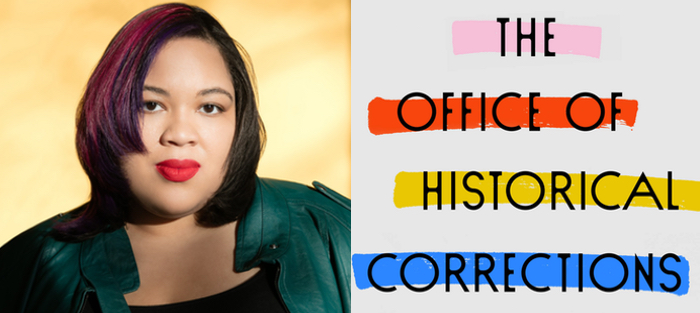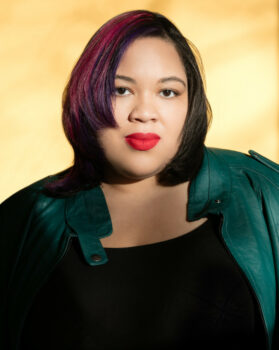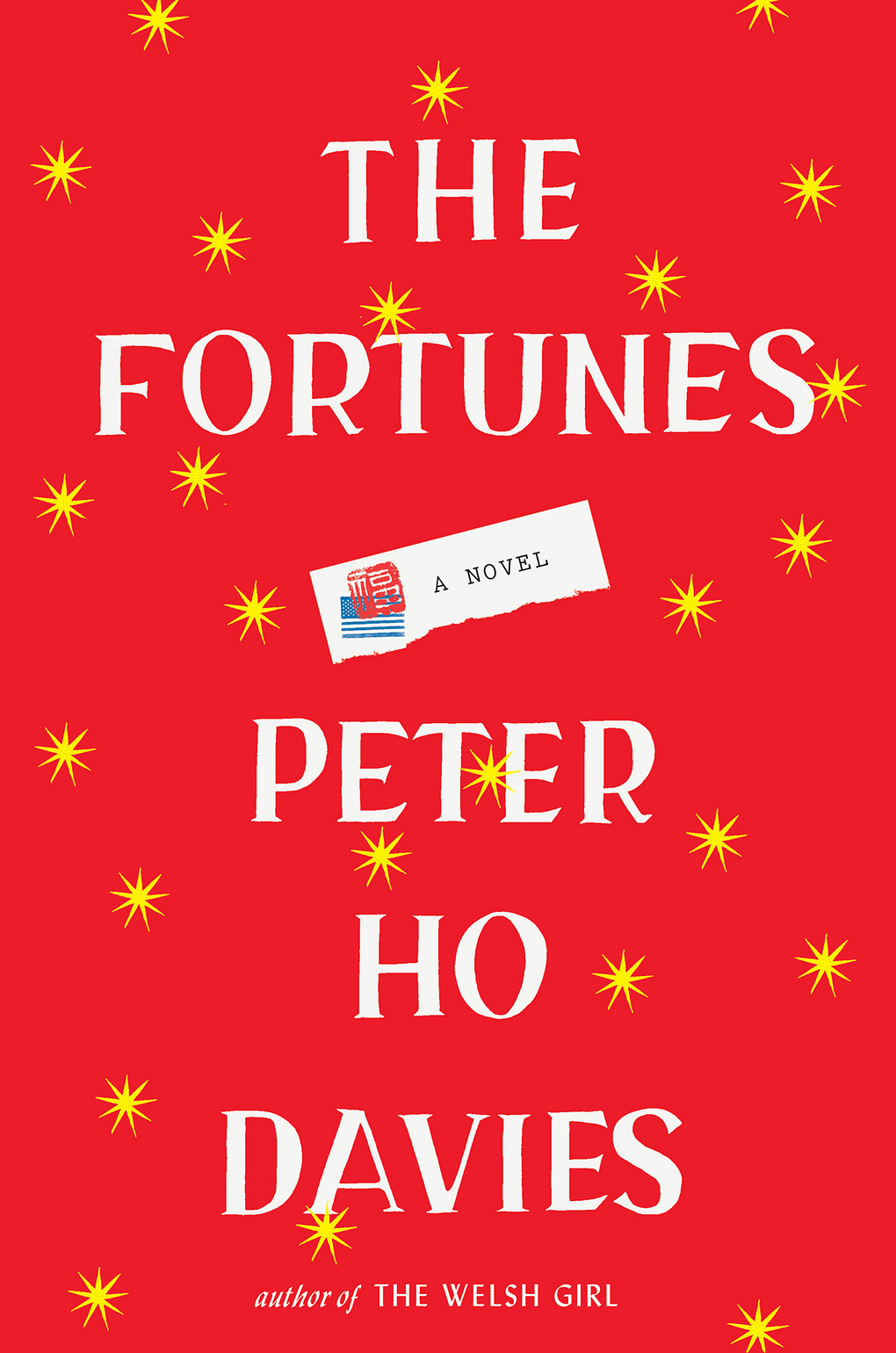We all just want it to be over. The isolation and masking. The distance between us. But now that we’re entering pandemic year two, this actually is our new existence. The sliver of silver lining is that we’re reading more, and books like Danielle Evans’ second collection of stories, The Office of Historical Corrections (Riverhead), is full of the thought bombs we have time to watch explode. Six stories and one novella explore racial performance, empathy, grief, bigotry, and perhaps most acute: the desire to be seen and heard. While we’re hoping in vain for our old lives back, we have the capacity to imagine instead the world we wish we lived in. Maybe fiction can show us how.
Danielle Evans is the author of the story collections The Office of Historical Corrections and Before You Suffocate Your Own Fool Self. Her work has won awards and honors including the PEN American Robert W. Bingham Prize, the Hurston-Wright award for fiction, and the Paterson Prize for fiction. She is a 2011 National Book Foundation 5 under 35 honoree and a 2020 National Endowment for the Arts fellow. The Office of Historical Corrections is a finalist for The Story Prize, and has been longlisted for The PEN/Faulkner Award, The Joyce Carol Oates Prize, and The Aspen Words Literary Prize. Evans received an MFA in fiction from the Iowa Writers Workshop, previously taught creative writing at American University in Washington DC and the University of Wisconsin, Madison, and currently teaches in The Writing Seminars at Johns Hopkins University.
More than a decade ago, when Danielle’s first collection, Before You Suffocate Your Own Fool Self, debuted, I was an MFA student in fiction and my mentor invited Danielle to our campus. Danielle and I met up for an interview and ended up as colleagues at the same university years later. We’re both now in Maryland, yet a visit isn’t possible. The ether of email and social media sustained us for this conversation.
Interview:
Melissa Scholes Young: The opening story, “Happily Ever After,” invites readers into the world of relentless grief. Lyssa lives a double life, saying one thing to her lover and doing exactly the opposite. The double existence protects her but also leaves her untethered: “…sometimes all it took to become something was to want it.” The double life also includes being black in white spaces. Does this code switching of identity intensify her loss?
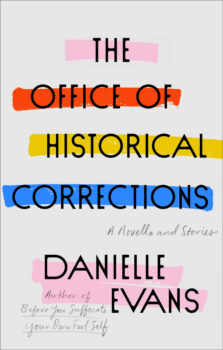 I don’t know that the code-switching intensifies her loss. It’s there in the story because it’s part of the everyday background noise of her life, but the grief is the new disruptive thing. The thing about grief is it can be all-consuming and intensely disruptive even for people who are extremely privileged—nothing can protect you from the emotional weight of that kind of loss. But when along with the grief, you have to navigate race and class, you have to think about how to present yourself at a hospital in order to make sure someone you love gets appropriate care, or deal with a coworker’s microaggressions, or learn that your boyfriend was flagged as security risk and put in danger while running an errand for you at the pharmacy, it puts more pressure on the systems of coping and performing it takes to get through every day at exactly the time you have the least capacity for even the standard everyday routines. So, I did want to think what it feels like to be in a moment of peak despair and then have added to it the quotidian racism that is so normalized that dealing with it is usually routine.
I don’t know that the code-switching intensifies her loss. It’s there in the story because it’s part of the everyday background noise of her life, but the grief is the new disruptive thing. The thing about grief is it can be all-consuming and intensely disruptive even for people who are extremely privileged—nothing can protect you from the emotional weight of that kind of loss. But when along with the grief, you have to navigate race and class, you have to think about how to present yourself at a hospital in order to make sure someone you love gets appropriate care, or deal with a coworker’s microaggressions, or learn that your boyfriend was flagged as security risk and put in danger while running an errand for you at the pharmacy, it puts more pressure on the systems of coping and performing it takes to get through every day at exactly the time you have the least capacity for even the standard everyday routines. So, I did want to think what it feels like to be in a moment of peak despair and then have added to it the quotidian racism that is so normalized that dealing with it is usually routine.
I see that doubleness mirrored in the form of the story too.
I think of the real doubleness in this story as primarily structural—there is the active plot, in which Lyssa moves through the world and does things, mostly things of limited consequence, and puts off the things that might be of major consequence. And then there’s the emotional plot, which is that her mother is dead. And of course that’s not really a plot at all but it’s also the only thing that’s ever really happening for her and the trick of the structure is to contain that.
Similar to Lyssa, Vera in “Anything Could Disappear” wants to belong somewhere and to settle into a life that fits. After finding a child abandoned on a public bus and raising it as her own, Vera hooks up with her boss and embraces domesticity. “So just like that, Vera’s life fell into place, or out of it.” Vera longs for the routine and certainty of schedule having a child enforces. A child needs to be fed, bathed, and regular sleep. It’s enough to tether Vera to time and “instant family.” In the end, doing the right thing leaves Vera empty. What makes Vera want so much to be tethered that she’s willing to simply drift between versions of herself?
Vera is one of the younger characters in this book, and I think of her as a person driven by a desire to make her life have meaning. But of course “meaning” is vague and abstract, especially when you feel like you haven’t yet found the thing that produces it. She heads to New York with some sense that meaning will present itself in a dramatic change, and then the dramatic change that presents itself is William. Everything can feel like a sign when you’re desperately looking for one.
The palpable pain of longing for motherhood is contrasted with the liberty and loneliness of single life. The characters hesitate at the responsibility of raising a child in a painful world and rightfully so. Yet they also rise to responsibility, loving and caregiving when they are called. There’s plenty of shade too and it’s delightful, couched in humor and written generously. How did the book and its themes evolve over the years of writing it?
I think often in a collection the themes emerge organically, and then come into play more consciously as you’re making decisions about what goes into the book and in what order. The story where I was maybe most of aware of that tension was “Richard of York Gave Battle in Vain,” which I originally thought was going to be a story about a woman going to the wedding of a man she had history with, and the tension between the two of them would be the core of the story. Dori, the man’s fiancée, I originally intended to write as sweet and stoic and with just enough depth to avoid being a caricature, even if the main character wanted to be dismissive of her. But, I realized very quickly that there was a more interesting tension between the two women, one that had very little to do with the man in question and was about the way that other people’s lives can feel like referendum on the choices you didn’t realize you were making, or the way that you can come to understand or even envy a person who chose the kind of life that you put so much energy into actively rejecting. In part this is a gendered tension—I think a lot of things, structurally, work to make women feel like every choice they’ve made is wrong, no matter what the choices were. We raised a generation of girls who were told they could have it all if they tried hard enough, but in many cases forgot to tell the same thing to their jobs and partners and the support systems they rely upon.
That seems especially poignant in the pandemic where sexist structures of work are revealed. The choices women fought so hard to have seem weaponized against them.
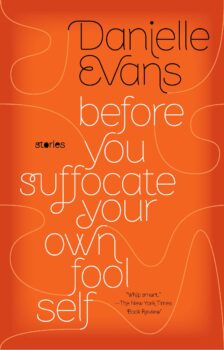 It’s true. More broadly, the book, and the short story form in general, is interested in the way that certain choices preclude others. I think a lot about that perfect Alice Munro line: “They were all in their early thirties. An age at which it is sometimes hard to admit that what you are living is your life.” So, I think a lot of the book is about characters in that age range, and several of the stories are living in the space of that restless dissatisfaction of admitting that what you are living is your life. And even when, of the parts that were up to you, you would choose the same life every time, I think it’s a period of life that no matter how much you value what you have, it often comes with a lot of kicking and screaming and a profound sense of loss because just a few years earlier, infinite lives still felt possible. I also think parenthood is inherently a question about the future, and so both reluctance and longing can be less about maternal instinct and more another version of the questions “Am I living a life that matters?” or “Is this a planet or country where I can afford to believe in the future?”
It’s true. More broadly, the book, and the short story form in general, is interested in the way that certain choices preclude others. I think a lot about that perfect Alice Munro line: “They were all in their early thirties. An age at which it is sometimes hard to admit that what you are living is your life.” So, I think a lot of the book is about characters in that age range, and several of the stories are living in the space of that restless dissatisfaction of admitting that what you are living is your life. And even when, of the parts that were up to you, you would choose the same life every time, I think it’s a period of life that no matter how much you value what you have, it often comes with a lot of kicking and screaming and a profound sense of loss because just a few years earlier, infinite lives still felt possible. I also think parenthood is inherently a question about the future, and so both reluctance and longing can be less about maternal instinct and more another version of the questions “Am I living a life that matters?” or “Is this a planet or country where I can afford to believe in the future?”
The first story is set in a gift shop. The second story ends with a bathing suit purchased in a gift shop. The third story is catapulted by a Confederate flag bikini purchased in a gift shop and intended for someone else. Similar threads nod to each other throughout the collection. The batons between setting and object are so satisfying. What was the process of ordering the stories?
It’s funny you noticed this, because I wrote the stories in this book over ten years, and, though my last months of editing were focused on thinking about the stories together and in conversation, right before the book was about to officially go to press, I freaked out and rewrote the ending to “Alcatraz” because I had just realized that both “Happily Ever After” and “Alcatraz” ended in gift shops. I had a phone talk with my editor’s assistant, who very kindly asked me why I had done that, and I explained about the gift shops, and she talked me down and I put some of the ending I’d deleted back. I hadn’t even noticed the third and fourth gift shops! I can only imagine the meltdown I would have had. And I think there’s briefly even a fifth one in the novella, now that you mention it. But it makes sense, I guess, that they would be a recurring image. This is, thematically, I think most of all a book about history and memory and how we hold on to or tell stories about the past. And a gift shop is a very concrete place where that happens—a gift shop is where you encounter the experience you just had, or some historical event, turned into an object; a gift shop is a place where you make a decision about how and whether you want to remember a place, what image of it you’ll carry with you.
The gift shop is such a ripe metaphor. I didn’t know how much I missed them until I waited for the next story and hoped for another sighting. They gave the stories a familiarity with each other in their repetition.
I do think the calibration of a collection is ideally to make it feel like you’re talking to yourself but not repeating yourself. So, the book opens with the story that I think contains the collection in miniature in some way. All of the themes that come up again—grief, racism, our weird ahistorical fetishizing of history, commitments, sex, anxiety about the future, mothering, daughtering, depression, ambivalence about becoming a parent—start there. And then ideally I think the next few stories in a collection should offer some form of complication or surprise about what the collection can contain. And then I just tried to avoid either jarring transitions or stories with a lot of themes in common until the last story, which I hope circles back to most of the themes in the first story, but in a different light.
Claire in “Boys Go to Jupiter” stunned me in such a necessary way. It’s a lesson in anti-racism. Claire is written with careful compassion and deep understanding. She is clumsy and careless in her racism and perhaps that’s the greater harm. The Halls, the black family next door, welcome her and show her love, the love she lacks. Yet she betrays them the most. Claire is cloaked in white privilege and evades all accountability. She doesn’t mean to hurt anyone with her Confederate flag bikini but her carelessness and stupidity does the most harm. It is a story written with stunning restraint. How do you construct a character like Claire when you really just want to shake them?
Thank you. I think Claire would be a less interesting character if her racism were more intentional. Part of the process of that story was that after my first book came out, every year I would go to various college campuses, and read and talk about my work. And I was often the only Black writer visiting that semester, and sometimes the only Black person in the room. And so, even when those audiences were thoughtful and welcoming, there was sometimes an uncomfortable dynamic. I felt like I was unofficially presenting a case for Black complexity or humanity even if that wasn’t what the work was actually about, and frustrated by the way that thinking of my work in those terms reduced a structural problem to a simple question of empathy. So, I thought how can I change this dynamic so that the gaze isn’t only one way, so that we’re all uncomfortable together, and something more complicated than one-dimensional empathy is happening? Claire had to be a character for whom some empathy was possible, because most people don’t think of themselves as monstrous racists, so, if she were a caricature of racism, the white people who most need to see her, or see themselves in her, would dismiss her or laugh at her in a way that affirmed their own sense of being superior to racists. I think too that a lot of well-intentioned stories that are written to “expose” racism in some way are just traumatic to read as a person of color—I already believe that racism exists and is pervasive, so I mostly don’t actually want unfettered access to someone’s innermost racist thoughts? So, writing Claire with nuance, and writing Claire as oblivious more often than she’s intentional, was not in any way meant to forgive or absolve her, but to make it a story where she could invoke some readers’ empathy for long enough for that to become uncomfortable, and open up a question about the price of empathy and the way it connects to privilege, and it was also a way for me to write a story that felt like it was looking directly at how structural racism operates, without making that story such nonstop trauma for myself or readers of color that I couldn’t inhabit it.
When you read your letter about pandemic loneliness for This American Life, which you’d published in the Sewanee Review, you contrasted the crowded, exhausting spaces of AWP (“in the before…and on the wrong side of caution”) with the year you’ve spent alone in an apartment in Baltimore. How do you see hibernation, which we often seek in writing residencies, as useful to creativity versus the work that is born from a forced lockdown?
I can imagine why people might think of residencies as hibernation. As a single person who’s lived alone in cities for her whole adult life, the value of residencies for me is in how communal and social they are. In regular life, my brilliant friends all have busy professional lives or partners or kids or all of the above, and so, in non-pandemic conditions, if I want to make community happen there’s often logistics involved—someone has to make a plan, and people have to coordinate their schedules and something like gathering five interesting people around a dinner table or finding a geographically convenient bar and meeting time for a group can take like a week to make happen and the rest of the week I might be alone most nights. At a residency every day there are people! Every night there’s a full table. I never have to be the one to host or coordinate or declare a weekly happy hour or reach out for company. I get to talk all night to people who work in different forms or genres and learn things about how they make their work. And someone else makes coffee every morning and makes sure I eat dinner before 10 PM. I think of residencies not as hibernation but as a magically indulgent form of artistic community. I miss them too.
Your collection ends with a novella, a timely, necessary, and devastating story of racial injustice and hate crimes. The narrator, Cassie, wonders if the truth even matters: “People can convince themselves of anything if they want badly enough to believe it.” Part of the message of the story is that we can’t fix what we won’t talk about. Did you always know that the collection would end with trauma?
In some ways this collection started with trauma—I knew fairly early in the process that I was writing a book about grief and anxiety, and some of that was personal, and some of that was grief and anxiety about the direction of the country. But the novella was the last thing I finished for the book, and I didn’t know how it would end until I got to the end of the first draft, and then I had to recalibrate some of what had come before. I do think, in different ways, the job of artists and historians is to ask people to look directly at things from which we might otherwise avert our eyes or forget.
What role can fiction play in righting historical wrongs?
I don’t know that fiction signed up for that job. I think my highest hope for fiction is that it can become part of the historical record, something that tells the future, assuming we get one, something about how we live now and how we figured out how to live through it, and maybe that will be a map or a sign or a moment of connection or reassurance that some future person needs in order to figure out how to live through their own stuff. The canon, like the historical record, has to wrestle with how excluding or limiting perspectives can create a false or flattened version of the truth of what it feels like to be human, but that’s a problem for me to wrestle with as a teacher and critic, not as a fiction writer.

